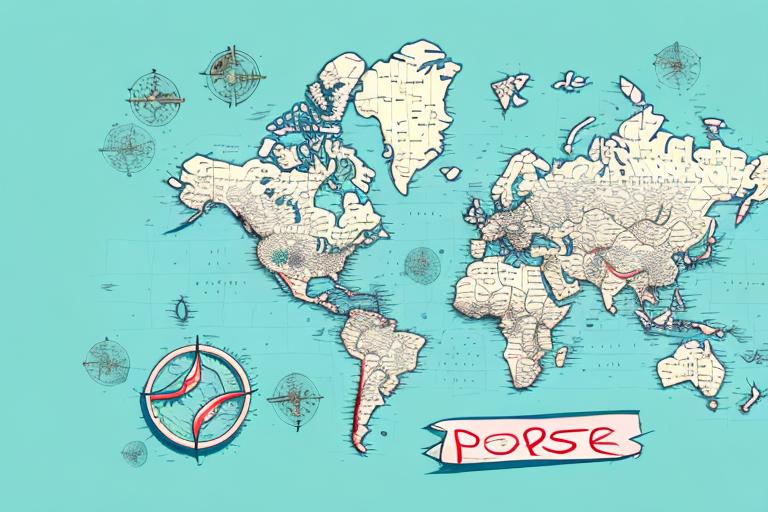Implementing Geolocation-Based Pricing and Offers: A Step-by-Step Guide
Are you looking for a way to attract new customers, increase sales, and improve customer satisfaction? Geolocation-based pricing and offers may be just what your business needs. This innovative technology utilizes a customer's location to provide personalized pricing and offers, making the buying experience more engaging and relevant than ever before. But how do you implement this strategy effectively? In this step-by-step guide, we'll explore everything you need to know to successfully implement geolocation-based pricing and offers in your business.
Understanding Geolocation Technology and Its Impact on Pricing and Offers
Geolocation technology identifies the physical location of a device or person using various methods such as GPS, Wi-Fi, and IP address tracking. According to a Statista report, over 90% of smartphone users have enabled location services, highlighting the widespread adoption of this technology. By leveraging geolocation, businesses can:
- Provide personalized pricing based on regional economic factors.
- Offer location-specific promotions and discounts.
- Enhance the overall customer experience by making offers more relevant.
For instance, a retailer can offer discounts to customers who are near a physical store location, incentivizing them to visit and make purchases. This not only improves customer satisfaction but also optimizes marketing efforts and enhances return on investment (ROI).
However, it's essential to consider potential drawbacks. Customers may have concerns about privacy and data security when businesses track their locations. Ensuring transparency and compliance with data protection regulations, such as the General Data Protection Regulation (GDPR), is crucial to maintaining trust and avoiding legal issues.
Benefits of Geolocation-Based Pricing and Offers
Implementing geolocation-based pricing and offers can provide numerous advantages for your business:
- Competitive Edge: Personalized pricing and promotions can capture customer attention and foster loyalty.
- Enhanced Customer Experience: Tailored offers based on location increase satisfaction and encourage repeat business.
- Increased Sales: Customers are more likely to purchase when they perceive offerings as customized to their needs.
- Optimized Marketing Efforts: Analyzing location data helps in creating targeted campaigns that resonate with specific audiences.
According to a study by Salesforce, businesses that adopt personalized marketing strategies see a significant boost in customer engagement and sales performance.
Implementing Geolocation-Based Pricing and Offers
Identifying the Target Audience
Before implementing geolocation-based pricing and offers, it's essential to identify your target audience. Consider the following questions:
- Who are your customers?
- Where are they located?
- What products or services are they interested in?
Understanding your customers' purchasing behavior, such as whether they are frequent buyers or occasional shoppers, and whether they prefer online or in-store purchases, can help tailor your pricing and offers effectively.
Collecting and Analyzing Data
Data collection and analysis are critical for the success of geolocation-based strategies. Gather data from various sources, including:
- Customer profiles
- Purchasing history
- Location data
Use this data to segment customers based on location, buying habits, and preferences. Tools like Google Analytics can provide valuable insights into customer behavior and market trends.
Creating Relevant Offers
Once you have a clear understanding of your target audience, create customized pricing and promotions tailored to their location. Examples include:
- Offering discounts to customers near a store location.
- Providing free shipping for customers in specific regions.
- Targeting event attendees with special offers.
Ensuring that your offers are timely and relevant enhances their effectiveness and increases the likelihood of conversion.
Personalizing the Customer Experience
Personalization is a key benefit of geolocation-based pricing. By tailoring offers to individual customer locations, you create a more engaging and relevant buying experience. This can lead to stronger customer relationships and increased loyalty.
Developing a Strategy
Successful implementation requires a well-defined strategy. Steps include:
- Defining your goals and objectives.
- Selecting the right technology and tools.
- Establishing a budget and timeline.
- Understanding customer segments and preferred channels.
A robust strategy ensures that your implementation aligns with business goals and delivers measurable results.
Choosing the Right Tools and Technologies
Selecting appropriate tools is crucial for effective geolocation-based pricing. Options include:
- Location-Based Marketing Platforms: Tools like Blueshift offer comprehensive solutions for targeting based on location.
- Geofencing Tools: Software like GeofencingProvider allows you to set virtual boundaries to trigger offers.
- GPS Tracking Software: Solutions such as Sinch Location Services provide real-time tracking and analytics.
Consider factors like budget, ease of use, scalability, and compatibility with your existing systems when selecting tools.
Measuring Success
To optimize your geolocation-based strategies, it's essential to measure their effectiveness. Define key performance indicators (KPIs) such as:
- Customer engagement rates
- Conversion rates
- Sales growth
- ROI of marketing campaigns
Utilize analytics tools to track these metrics and gather customer feedback through surveys to refine your strategies continuously.
Overcoming Challenges
Implementing geolocation-based pricing and offers can present challenges, including:
- Technical Difficulties: Ensuring seamless integration with existing systems.
- Budget Constraints: Allocating sufficient resources for technology and marketing.
- Regulatory Compliance: Adhering to data privacy laws like GDPR and CCPA.
Address these challenges by investing in reliable technology, planning a realistic budget, and staying informed about regulatory requirements.
Best Practices for Implementing Geolocation-Based Pricing and Offers
Following best practices ensures the success of your geolocation-based strategies:
- Provide Personalized Incentives: Tailor offers to individual customer locations and preferences.
- Use Location-Based Push Notifications: Engage customers in real-time with timely offers.
- Optimize Your Website and Mobile App: Ensure seamless location tracking and user experience.
- Conduct A/B Testing: Experiment with different pricing and promotion strategies to identify what works best.
- Maintain Consistent Messaging: Ensure that your offers align with your brand identity and are communicated clearly.
Adhering to these practices builds customer trust, enhances engagement, and increases the effectiveness of your marketing efforts.
Examples of Successful Implementation of Geolocation-Based Pricing and Offers
Several businesses have effectively utilized geolocation-based pricing to boost sales and enhance customer satisfaction:
- Starbucks: Uses location-based marketing to send push notifications to customers near a store, offering discounts on their favorite beverages.
- Domino's Pizza: Implements GPS tracking to monitor deliveries and provide customers with real-time updates, improving delivery times and customer satisfaction.
- Target: Offers location-specific promotions through their mobile app, driving foot traffic to physical stores.
These examples demonstrate how tailored pricing and offers can lead to increased customer engagement and business growth.
Future Trends in Geolocation Technology for Pricing and Offers
The future of geolocation technology in pricing and offers is set to be shaped by several emerging trends:
- Artificial Intelligence and Machine Learning: Enhance the accuracy and personalization of pricing strategies based on predictive analytics.
- Augmented Reality (AR) and Virtual Reality (VR): Create immersive shopping experiences that integrate location-based offers seamlessly.
- Integration with Internet of Things (IoT): Enable real-time interactions and dynamic pricing based on environmental factors.
As these technologies evolve, businesses can expect even more sophisticated and effective geolocation-based pricing and promotional strategies.
Conclusion: Enhancing Your Business with Geolocation-Based Pricing and Offers
Geolocation-based pricing and offers are becoming a game-changer for businesses aiming to engage customers and optimize marketing efforts. By providing personalized pricing and promotions based on a customer's location, businesses can:
- Increase customer satisfaction and loyalty.
- Gain a competitive advantage in the market.
- Improve ROI through targeted marketing campaigns.
To implement these strategies successfully, businesses must develop a clear strategy, understand their target audience, and leverage the right tools and technologies. By following best practices and addressing potential challenges, businesses can create a highly personalized buying experience that meets their customers' needs and preferences, driving growth and success.






















